csv
Type of resources
Topics
Keywords
Contact for the resource
Provided by
Years
Formats
Representation types
Update frequencies
-
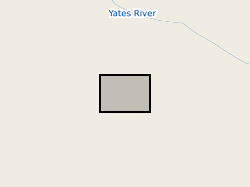
This dataset contains a catalogue of in-situ models for a fault activated by hydraulic fracturing in the Horn River Basin in July 2011. These were created as a part of Kettlety et al. (2019), wherein a Monte Carlo analysis was used to assess fault stability. See attached readme file for more details.
-
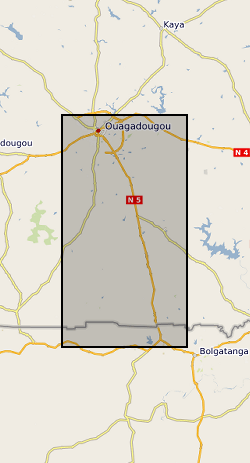
The datasets consist of soil moisture (hourly-weekly), river stage (1 min), and groundwater level (hourly) collected as part of the BRAVE project (NE/M008827/1 and NE/M008983/1) to understand the resilience of boreholes in low-yielding aquifers in the River Volta Basin to climate. The data were collected from physical observatories in Sanon (Burkina Faso) and Aniabisi (Ghana). Soil moisture data were logged hourly beneath contrasting land uses and roaming soil moisture surveys were also undertaken across a wider access tube array. River stage was monitored at the catchment outlet in Sanon and groundwater levels were measured in both catchments.
-

Strontium/calcium, magnesium/calcium, lithium/calcium and boron/calcium ratios of 107 aragonite samples precipitated in vitro using a pH stat titrator using the constant composition technique between August 2020 and April 2022. Measured seawater pH and dissolved inorganic carbon concentrations (DIC) are used to estimate the seawater aragonite saturation state (O) of each precipitation. Aragonite precipitation rates are estimated from the rate of titrant dosing. The trace element contents of the solid produced in the experiment was corrected for the composition of the seed used as a surface for aragonite growth. Seawater [Sr], [Mg], [Li], [B] and [Ca] were also measured and seawater [B(OH)4-] is estimated from total seawater [B] and pH. Data were collected to determine how changes in the calcification fluids of calcareous organisms affect aragonite precipitation. Data were collected by Cristina Castillo Alvarez and Ed Hathorne and interpreted by Cristina Castillo Alvarez, Nicola Allison, Adrian Finch, Kirsty Penkman, Roland Kröger, Ed Hathorne and Matthieu Clog.
-
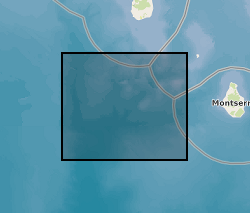
Earthquake hypocenters for all earthquakes detected on Montserrat by the Montserrat Volcano Observatory seismic network from July 1995 to February 2018 inclusive. Information includes: Origin Time, Latitude, Longitude, Depth, Hypocenter Errors, RMS and the number of stations used for each location.
-
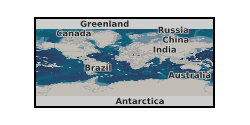
Surface level measurements of the Erebus volcano lava lake, Antarctica. Surface level was measured from a site at the crater rim using the Eredar radar system, a ground-based X-band FMCW radar (described in detail here: https://doi.org/10.1029/2018GL079177). The dataset contains a single continuous measurement period from 2016 (all times in UTC): 19 Dec 00:35 -> 19 Dec 19:21 Measurements were taken at a rate of ~0.25 Hz, using a 0.16 s 400 MHz bandwidth Linear Frequency Modulated chirp centred at 10.4 GHz, with 10 chirps being averaged for each measurement.
-
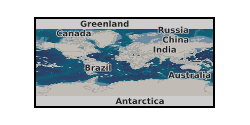
Data were collected on olivine hosted melt inclusions from four Icelandic eruptions: Stapafell, Haleyjabunga, Berserkjahraun and Heilagsdalsfjall. These data were released as part of the paper "The global melt inclusion C/Ba array: Mantle variability, melting process, or degassing?", published in Geochimica et Cosmochimica Acta, with doi: 10.1016/j.gca.2020.09.030. The data collected to place new constraints on the volatile content of the Icelandic mantle source. The data include measurement of C and H by Secondary Ion Mass Spectrometry, lithophile trace elements (including Ba and Nb) by Secondary Ion Mass Spectrometry, and measurement of major element composition of the melt inclusions and their olivine hosts by Electron Probe Microanalysis. The data were collected in 2017-2018, between Edinburgh (NERC ion probe facility) and Cambridge (EPMA).
-
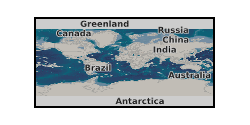
Electronic Supplementary Material: "Event trees and epistemic uncertainty in long-term volcanic hazard assessment of rift volcanoes: the example of Aluto (Central Ethiopia)", by Tierz, P., Clarke, B., Calder, E. S., Dessalegn, F., Lewi, E., Yirgu, G., Fontijn, K., Crummy, J. M., and Loughlin, S. C., submitted to Geochemistry, Geophysics, Geosystems. The datasets contain volcanological data on analogue (i.e. similar) volcanoes of Aluto volcano (Ethiopia), including conditional probabilities of eruption size, number of eruptions with specific volcanic phenomena reported and values of volcano analogy calculated using the VOLCano ANalogues Search tool (VOLCANS, Tierz et al., 2019, https://doi.org/10.1007/s00445-019-1336-3). These type of data can be used to parameterise event tree models (e.g. Newhall and Hoblitt, 2002, https://doi.org/10.1007/s004450100173; Marzocchi et al., 2010, https://doi.org/10.1007/s00445-010-0357-8) and, thus, quantify volcanic hazard at a particular volcano of interest, including the relevant sources of uncertainty. The production of the datasets was supported by the UK Natural Environment Research Council project: Rift Volcanism: Past, Present and Future (RiftVolc). Grant NE/L013460/1.
-
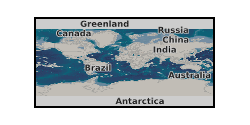
The data are from a suite of friction experiments performed on simulated gouges from the Nankai Trough (Japan). The simulated gouges were prepared by crushing cuttings of Nankai accretionary sediments collected during Integrated Ocean Drilling Program (IODP) Expedition 358. The cuttings were crushed to produce a powder (i.e. simulated gouge) with a grain size of >125 microns. These simulated gouges were sheared under a range of effective normal stress (10-75 Mpa) and pore-fluid pressure (5-75 Mpa) conditions while the sliding velocity was stepped between 0.3 and 3 microns/s to calculated the rate-and-state friction parameter (a-b). The Nankai gouge are strongly rate-strengthening and become more rate-strengthening (i.e. more frictionally stable) at elevated pore-fluid pressure. In contrast, varying the effective normal stress has minimal effect on the frictional stability of the gouges.
-
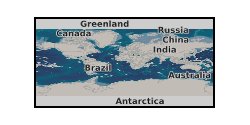
Surface level measurements of the Halema'uma'u lava lake, Hawaii. Surface level was measured from a site at the crater rim (19.40452 N 155.27944 W 1125 M a.s.l) using the Eredar radar system, a ground-based X-band FMCW radar (described in detail here: https://doi.org/10.1029/2018GL079177). Due to technical problems, the radar did not acquire continuously throughout its deployment. The dataset contains three blocks of successful continuous measurement periods (all times in UTC): 10 Jan 22:18 -> 11 Jan 08:46 11 Jan 21:24 -> 12 Jan 22:49 14 Jan 20:27 -> 14 Jan 23:01 Measurements were taken at a rate of ~1 Hz, using a 20 ms 400 MHz bandwidth Linear Frequency Modulated chirp centred at 10.25 GHz.
-

Oxygen and carbon isotope ratios (δ18O, δ13C) were measured on 10 to 12 shells of mixed-layer dwelling species Globigerinoides subquadratus from the 250 to 315 μm size fraction from 425 meters composite depth (mcd) until its extinction at 390 mcd. Analyses then continue with Globigerinoides spp. until 350 mcd. In a few samples, where foraminiferal density was low, only 5–7 specimens were analyzed. Analyses were made with a VG Optima mass spectrometer with multi prep device at the British Geological Survey, Keyworth, UK. When picking shells, care was taken to exclude individuals with broken or missing chambers, although preservation of specimens was generally excellent (Fox & Wade, 2013). The external reproducibility of our measurements is ±0.07‰ and ±0.05‰ for δ18O and δ13C respectively. To examine the reproducibility of the results, duplicate measurements were made on 35 samples (5%), which indicate mean reproducibility better than ±0.12‰ and ±0.14‰ for δ18O and δ13C, respectively. Oxygen isotope data are reported as per mil on the VPDB scale (Table S1) calibrated through laboratory and international standards. At ODP Site 1146, δ18O and δ13C were measured by Holbourn et al., (2010) on the mixed-layer dwelling planktonic foraminifera Globigerinoides obliquus or Gs. subquadratus, using 10 to 20 well-preserved tests from the size fraction 250-350 μm. Paired measurements in 51 samples indicate no significant offset in δ18O and δ13C between Gs. obliquus and Gs. subquadratus. Detailed methods are outlined in Holbourn et al., (2010). δ13C data are not used here. For Mg/Ca analyses, we selected 25–35 specimens of Trilobatus quadrilobatus (140–550 μg) from the 250 to 315 μm size fraction; the same size fraction as used for δ18O analysis, to minimize size-related intraspecific elemental variation (Elderfield et al., 2002). Analyses were performed on 86 samples over the studied interval. The tests were gently crushed and subsequently cleaned according to the protocol of Martin & Lea (2002) to remove clays. Cleaning included a reductive step with hydrazine to remove Mn-(hydr)oxides. Samples were measured on an ICP-AES device at Christian-Albrechts-Universität zu Kiel, Germany. Analytical precision is ~1.1%, based on measurements of an internal laboratory standard. Replicate Mg/Ca measurements revealed an average standard deviation of ~0.08 mmol/mol. Adequate cleaning is indicated by very low Fe/Ca, Al/Ca and Mn/Ca ratios.
 NERC Data Catalogue Service
NERC Data Catalogue Service